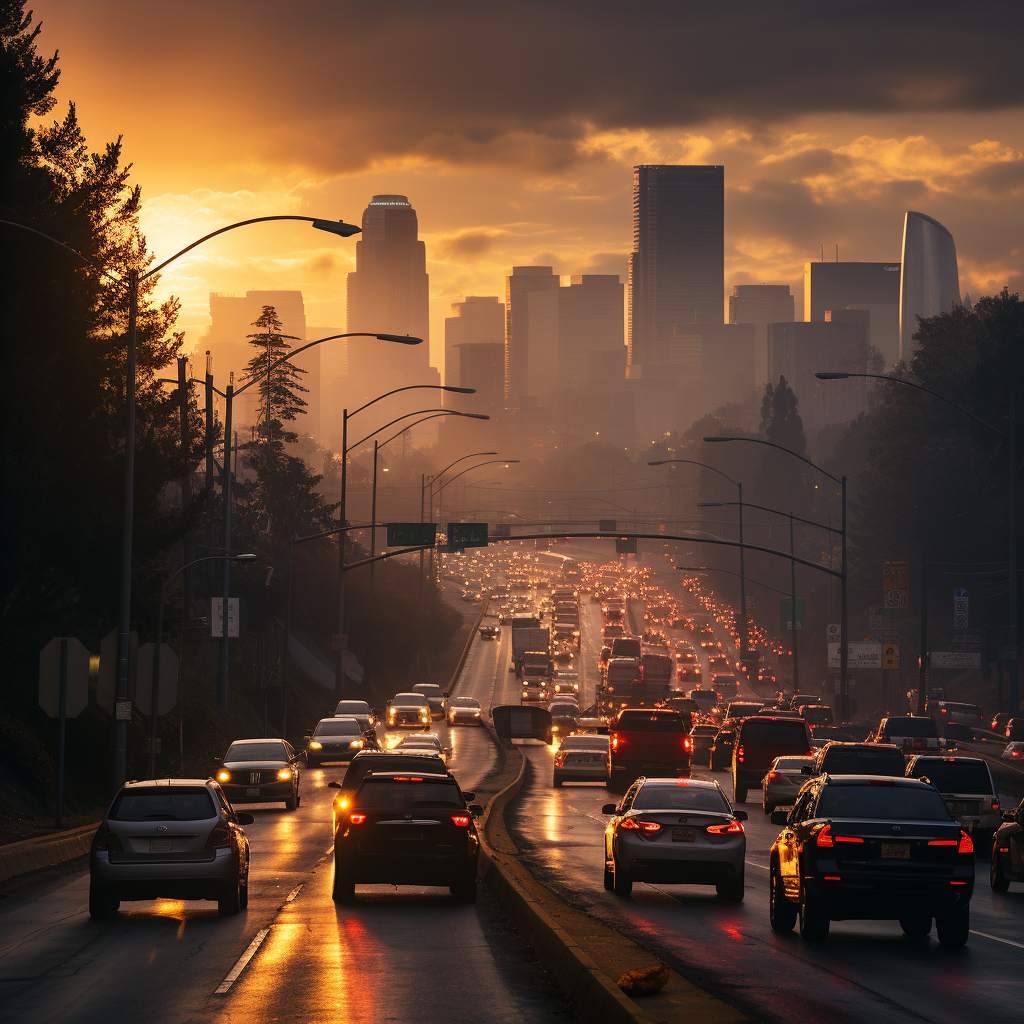California’s Interstate 110 (I-110) and State Route 110 (SR-110), collectively known as the Harbor Freeway, are more than just thoroughfares connecting various destinations. They are arteries pulsating with history, culture, and modern-day transportation challenges and solutions. This article delves into the fascinating journey of these routes, from their inception to their current status, offering readers a comprehensive understanding of their significance in the Southern California region.

Contents
- 1 Historical Overview
- 2 Route Description and Landmarks
- 3 Legal and Commercial Restrictions
- 4 Modern Developments and Transportation Solutions
- 5 Route Description and Cultural Landmarks
- 6 Engineering Marvels and Innovations
- 7 Legal Framework and Commercial Implications
- 8 Modernization and Future Outlook
- 9 Challenges and Opportunities
Historical Overview
The Harbor Freeway, beginning its journey in 1954 and reaching completion around 1962, was one of the earliest freeways in Los Angeles. Originally signed as US 6 and SR-11, it underwent several transformations, including a renumbering in 1984 when SR-11 became I-110. This route, stretching from the 10 south to San Pedro and continuing as SR-110 on Gaffey St. to 9th St. in San Pedro, has been a witness to Los Angeles’ evolving landscape.
Route Description and Landmarks
I-110, starting from San Pedro and connecting to Downtown Los Angeles and Pasadena, is a testament to urban planning and engineering. The route is known for the Harbor Transitway, a grade-separated express bus and high-occupancy toll corridor, and the iconic Judge Harry Pregerson Interchange. Along its path, it showcases landmarks like the Los Angeles Harbor College, California State University, Dominguez Hills, Watts Towers, and the Crypto.com Arena, among others.
Legal and Commercial Restrictions
A significant aspect of Route 110 is the special route restriction history, particularly on the Pasadena Freeway section. Commercial vehicles over 6,000 pounds face restrictions, with specific exemptions for passenger stages, pickups or deliveries, and public utilities. These regulations, stemming from various city ordinances in Los Angeles, South Pasadena, and Pasadena, highlight the route’s unique position in urban transportation management.
Modern Developments and Transportation Solutions
The Harbor Freeway has undergone significant modernization to accommodate contemporary transportation needs. The introduction of HOV and bus transit stations and the conversion of HOV lanes to high-occupancy toll lanes in 2012 are steps towards addressing the increasing traffic demands. These developments not only enhance travel efficiency but also contribute to sustainable urban mobility.
Its completion around 1962 heralded a new age of urban mobility, facilitating the rapid growth and expansion of Los Angeles. The renumbering to I-110 in 1984 was not just a change in nomenclature but also a reflection of the evolving needs and priorities of the region’s transportation network.
Route Description and Cultural Landmarks
Spanning from San Pedro to Pasadena, I-110 and SR-110 traverse diverse landscapes and neighborhoods, each with its unique character. The route is a tapestry of Los Angeles’ cultural and architectural diversity, passing landmarks such as the Los Angeles Harbor College, California State University, Dominguez Hills, the iconic Watts Towers, and modern structures like the Crypto.com Arena. These landmarks are not just visual treats but also pivotal in understanding the socio-economic fabric of the region.
Engineering Marvels and Innovations
The Harbor Freeway is home to some of the most significant engineering feats in California. The Judge Harry Pregerson Interchange, a complex network of flyovers and bridges, is a testament to innovative engineering solutions to urban traffic challenges. The Harbor Transitway, a dedicated corridor for buses and high-occupancy vehicles, represents a shift towards more sustainable and efficient urban transit solutions.
Legal Framework and Commercial Implications
The operational dynamics of Route 110 are heavily influenced by legal restrictions, particularly concerning commercial vehicle access. The Pasadena Freeway section, for instance, restricts vehicles over 6,000 pounds, with exemptions under specific conditions. These regulations, shaped by local ordinances, underscore the route’s unique role in balancing commercial transportation needs with urban planning and safety considerations.
Modernization and Future Outlook
As mentioned earlier, in recent years, the Harbor Freeway has seen significant modernization efforts. The conversion of HOV lanes to high-occupancy toll lanes in 2012 was a strategic move to manage traffic flow and encourage carpooling. These developments are not just about enhancing road capacity but also about adapting to the changing paradigms of urban transportation, focusing on sustainability and efficiency.
Challenges and Opportunities
Despite its historical and cultural significance, I-110 and SR-110 face modern challenges. Congestion, maintenance, and integration with the broader transportation network of Los Angeles are ongoing concerns. Addressing these challenges requires a multifaceted approach, involving infrastructure upgrades, policy interventions, and embracing technological advancements in traffic management.
Interstate 110 and State Route 110 in California are more than just numbers on a map. They represent the historical evolution, cultural significance, and ongoing efforts to meet the transportation needs of a bustling metropolis. From their early days to the present, these routes continue to play a pivotal role in connecting communities and fueling the economic and social vibrancy of Southern California.
